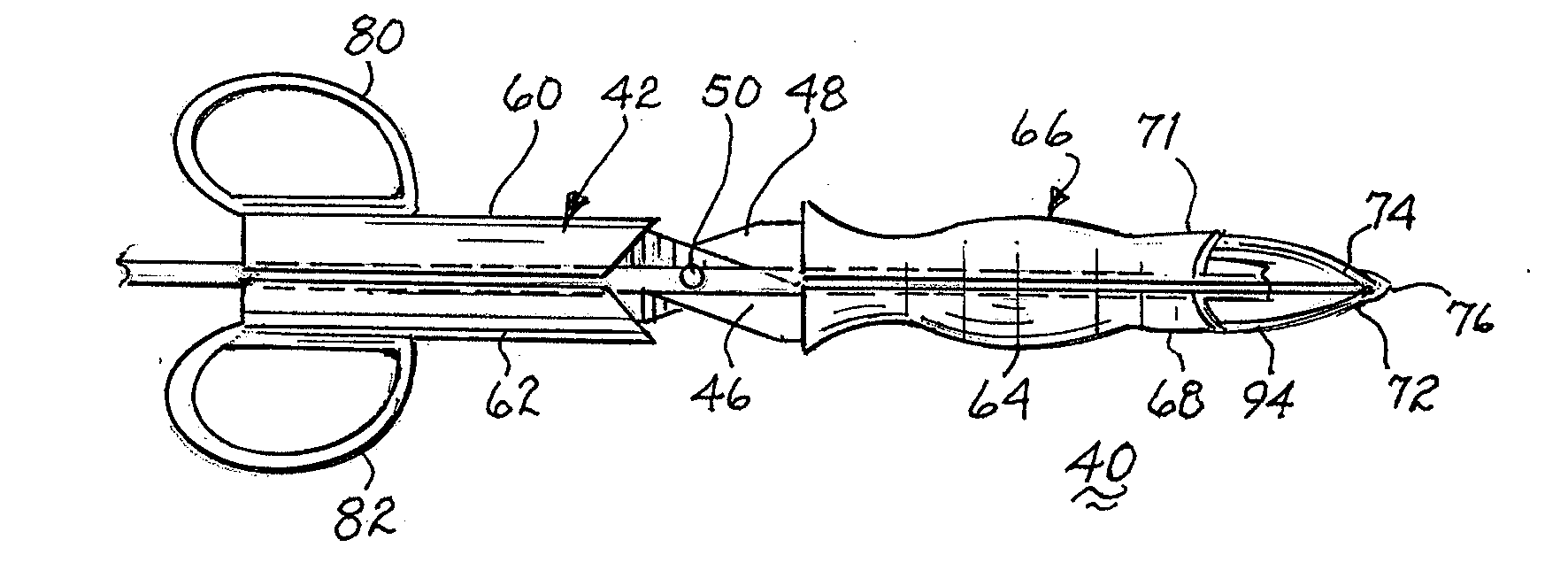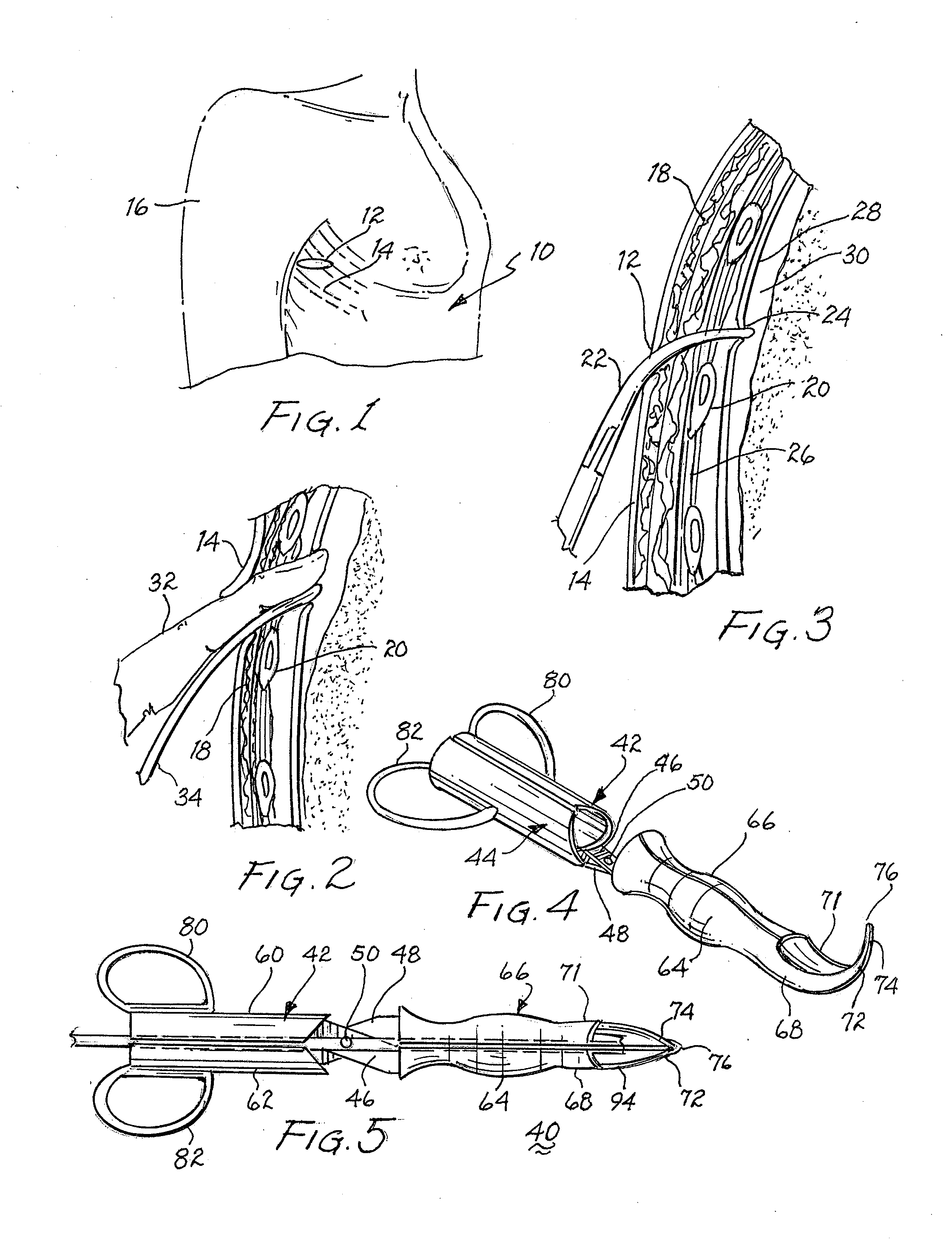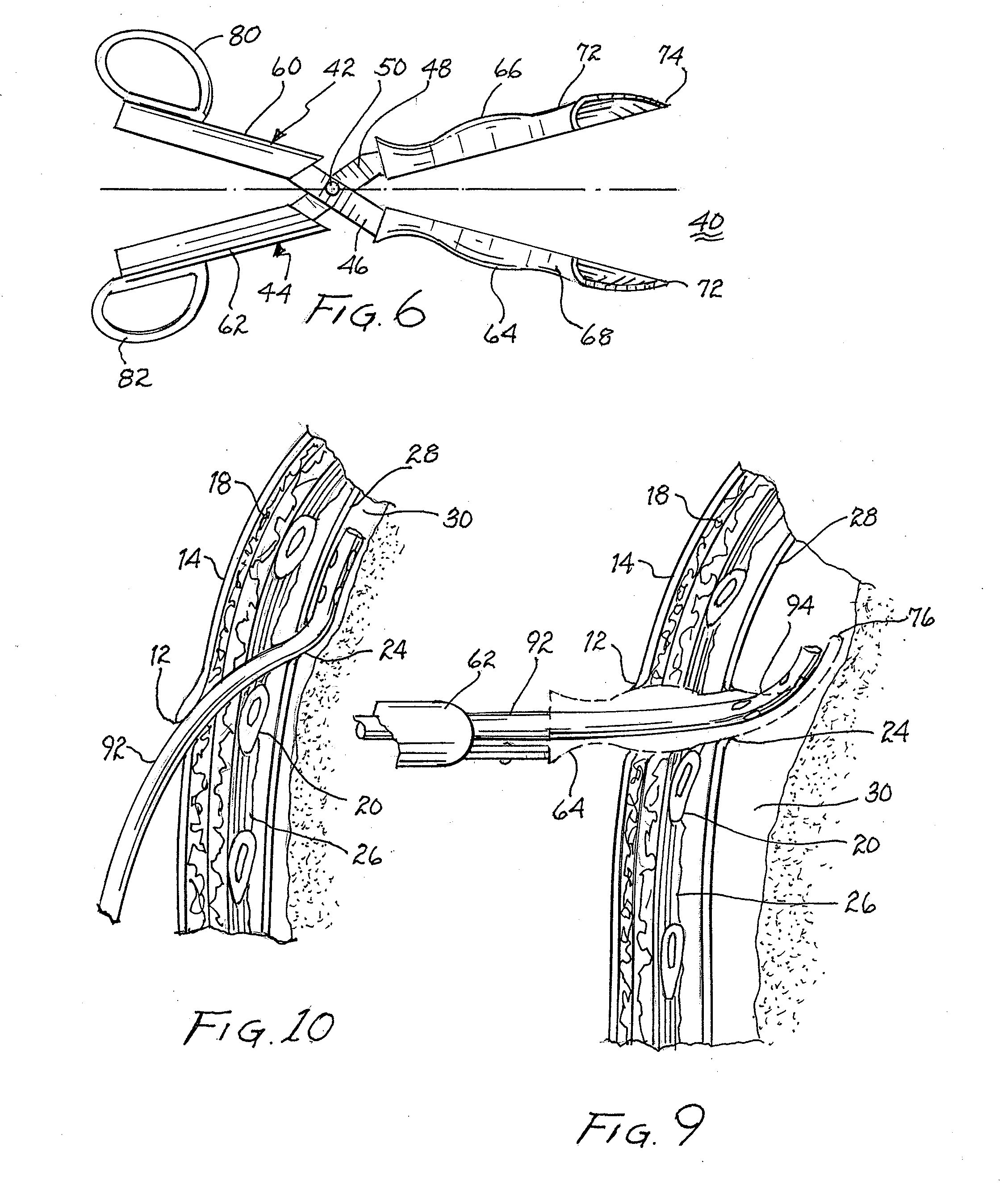Medical instrument for inserting a chest drainage tube
a technology for insertion of chest drainage tubes and medical instruments, which is applied in the field of medical instruments, can solve the problems of never further advanced, and achieve the effect of convenient and rapid operation, less time-consuming
- Summary
- Abstract
- Description
- Claims
- Application Information
AI Technical Summary
Benefits of technology
Problems solved by technology
Method used
Image
Examples
Embodiment Construction
[0031]Referring to FIGS. 1 and 2, there is shown a torso 10 of a man prior to insertion of a chest drainage tube in the pleural cavity. An incision 12 is made through skin 14 at the level of the fifth intercostal space overlying the sixth rib. The incision is made just anterior of the mid-axillary line in a horizontal fashion. The patient's arm 16 is elevated above the patient's head to allow for adequate access. The incision is 3 cm in length after injection of local anesthetic into skin 14, subcutaneous tissue 18, and just above rib 20. Once this is done, dissection through subcutaneous tissue 18 over rib 20 is done with a Kelly clamp 22.
[0032]It is important to dissect the rib above incision 12 to offset this incision from the pleural incision 24 so that the two incisions do not line up when the chest drainage tube is pulled out. Further blunt dissection is carried out through intercostal muscles with clamp 22 and it is important to keep the clamp riding along the cephalad border...
PUM
 Login to View More
Login to View More Abstract
Description
Claims
Application Information
 Login to View More
Login to View More - R&D
- Intellectual Property
- Life Sciences
- Materials
- Tech Scout
- Unparalleled Data Quality
- Higher Quality Content
- 60% Fewer Hallucinations
Browse by: Latest US Patents, China's latest patents, Technical Efficacy Thesaurus, Application Domain, Technology Topic, Popular Technical Reports.
© 2025 PatSnap. All rights reserved.Legal|Privacy policy|Modern Slavery Act Transparency Statement|Sitemap|About US| Contact US: help@patsnap.com



